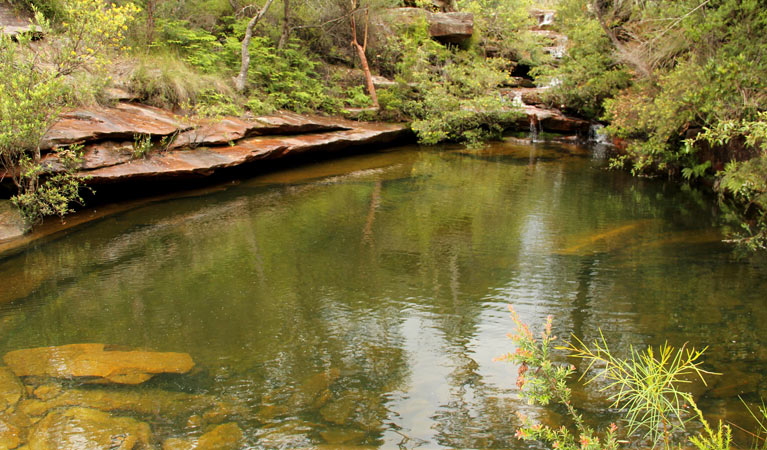Hominy Creek walking track
Popran National Park
Overview
Go walking along Hominy Creek walking track in Popran National Park to the picturesque crystal clear waters of Emerald Pool.
- Where
- Popran National Park in Sydney and surrounds
- Distance
- 5km return
- Time suggested
- 2hrs 30min - 3hrs 30min
- Grade
- Grade 4
- Trip Intention Form
-
It's a good idea to let someone know where you're going. Fill in a trip intention form to send important details about your trip to your emergency contact.
- Please note
- The track is accessed via Ironbark picnic area, which has a small dirt carpark, but it’s not recommended for low-clearance 2WD vehicles.
- There is a tethering post for horses here.
Branching off Mount Olive trail, Hominy Creek walking track is a picturesque detour which would make any postcard jealous. The track is lined with ferns and partially shaded by majestic eucalypts, so it’s the ideal place to stroll and also to have a picnic.
Along the track, you'll have the opportunity to stop and witness the beauty of Emerald Pool. The areas around this creek are picturesque, and it's the perfect habitat for the green and golden bell frog, as well as the red-crowned toadlet.
Map
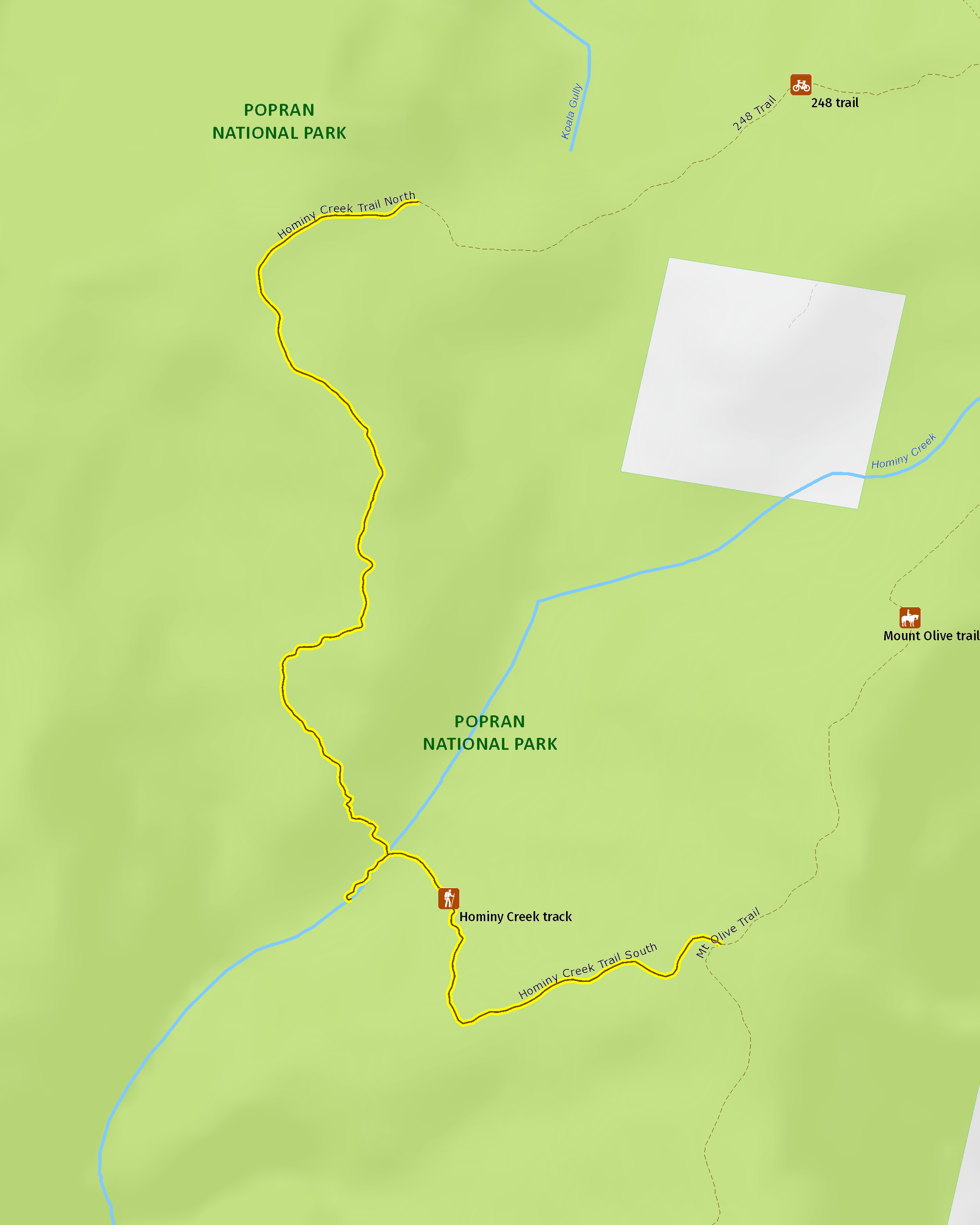
Map legend

Local alerts
For the latest updates on fires, closures and other alerts in this area, see https://uat.nswparks.cloud/things-to-do/walking-tracks/hominy-creek-walking-track/local-alerts
General enquiries
- National Parks Contact Centre
- 7am to 7pm daily
- 1300 072 757 (13000 PARKS) for the cost of a local call within Australia excluding mobiles
- parks.info@environment.nsw.gov.au
Park info
- in Popran National Park in the Sydney and surrounds region
Popran National Park is always open but may have to close at times due to poor weather or fire danger.
Visitor info
All the practical information you need to know about Hominy Creek walking track.
Maps and downloads
Learn more
Hominy Creek walking track is in Popran National Park. Here are just some of the reasons why this park is special:
A haven for wildlife
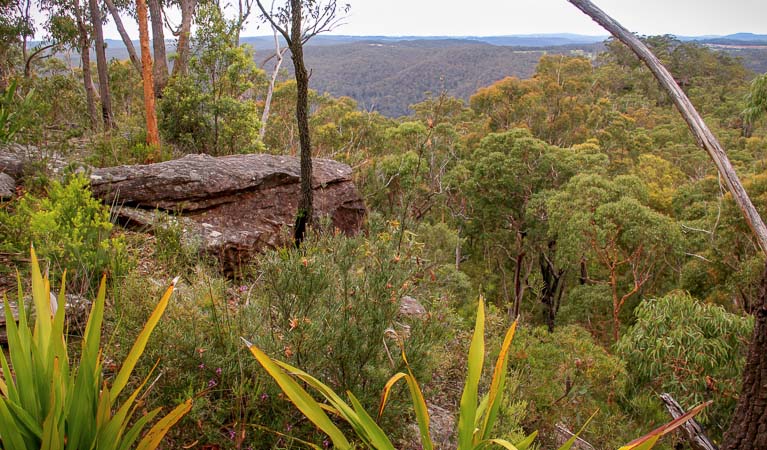
The increasingly rare, untouched freshwater streams and mangroves of the Hawkesbury river are a sanctuary for the many animals that live there. If you're an avid birdwatcher, you might catch glimpses of glossy black cockatoos and masked owls in the park's tall forests and wet gullies. You are unlikely to see the nocturnal yellow-bellied glider during the day, but you might be lucky to hear their distinctive growling call, it's been recorded to have been heard up to 500m away.
- 248 trail 248 trail is a popular horse riding and mountain biking track which meanders through Popran National Park in the NSW Central Coast hinterland.
Outdoor adventurer's playground
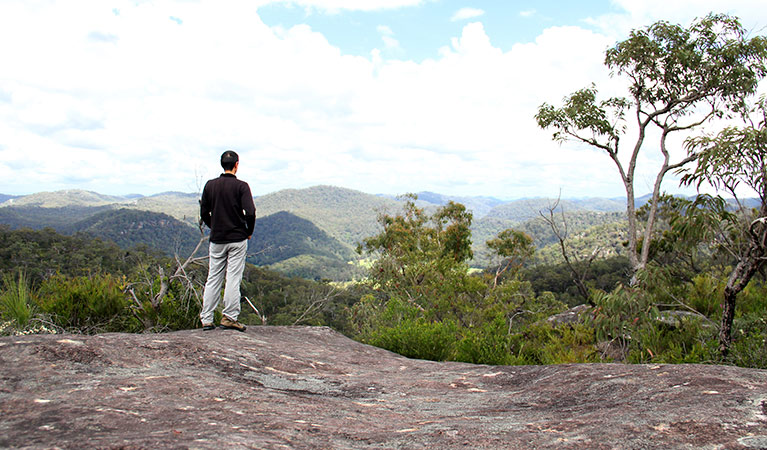
Popran National Park offers an immense range of opportunities for recreation in a beautiful Australian bushland and river setting. Offering visitors expansive landscapes and gorgeous water views, it is one of only a few parks on the Central Coast that caters for horse riding and mountain biking. Both the 248 trail and the Mount Olive trail can be explored by horse or by bike, and you can enjoy a picnic or swim to relax after your efforts.
- 248 trail 248 trail is a popular horse riding and mountain biking track which meanders through Popran National Park in the NSW Central Coast hinterland.
- Horse riding adventures in Popran National Park Saddle up with Glenworth Valley Outdoor Adventures for an unforgettable horseback tour along scenic bushland trails in Popran National Park, not far from Sydney.
- Mount Olive lookout Mount Olive Lookout is only a short walk from Ironbark picnic area in Popran National Park on the central coast and offers scenic views over Popran Creek.
Rich Aboriginal heritage
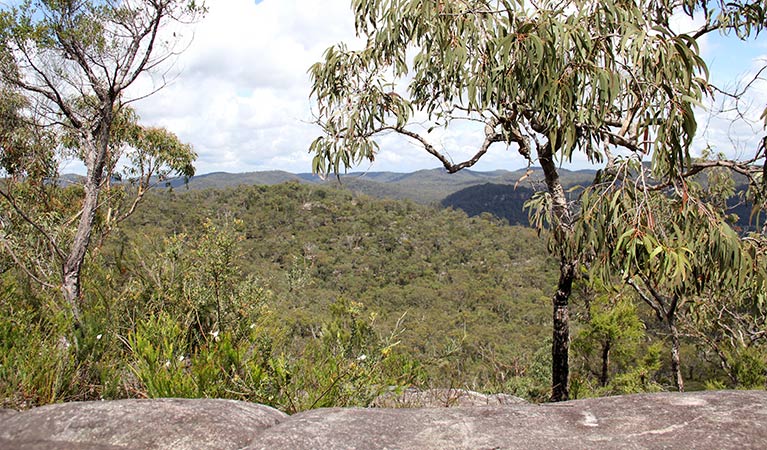
When you visit Popran National Park, you'll see evidence of 11,000 years of rich Aboriginal heritage. From the earth to the waterways, animals and plants, each of these holds a special place in the hearts of the custodians of this land, and the park proudly protects these significant places so we can celebrate Aboriginal culture for generations to come. The park protects a number of Aboriginal sites, like rock engravings, sandstone shelters and foreshore middens. If you find an axe grinding groove in the sandstone, you might be able to imagine how you'd sharpen your tool to catch a meal for your family.
Plants and animals protected in this park
Animals
-

Sugar glider (Petaurus breviceps)
The sugar glider is a tree-dwelling Australian native marsupial, found in tall eucalypt forests and woodlands along eastern NSW. The nocturnal sugar glider feeds on insects and birds, and satisfies its sweet tooth with nectar and pollens.
-

Yellow-tailed black cockatoo (Calyptorhynchus funereus)
The yellow-tailed black cockatoo is one of the largest species of parrot. With dusty-black plumage, they have a yellow tail and cheek patch. They’re easily spotted while bird watching, as they feed on seeds in native forests and pine plantations.
Plants
-

Gymea lily (Doryanthes excelsa)
The magnificent Gymea lily is one of the most unusual Australian native plants, found only along the coast and surrounding bushland of the Sydney Basin, from Newcastle to Wollongong. In spring this giant lily shoots out spectacular red flowers that can reach heights of 2-4m.
-

Smooth-barked apple (Angophora costata)
Smooth-barked apple gums, also known as Sydney red gum or rusty gum trees, are Australian native plants found along the NSW coast, and in the Sydney basin and parts of Queensland. Growing to heights of 15-30m, the russet-coloured angophoras shed their bark in spring to reveal spectacular new salmon-coloured bark.
-

Grass tree (Xanthorrea spp.)
An iconic part of the Australian landscape, the grass tree is widespread across eastern NSW. These Australian native plants have a thick fire-blackened trunk and long spiked leaves. They are found in heath and open forests across eastern NSW. The grass tree grows 1-5m in height and produces striking white-flowered spikes which grow up to 1m long.

